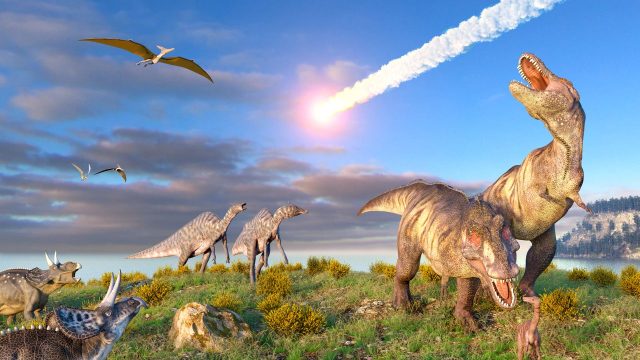
What happened
Dinosaurs appear to have been thriving before a giant asteroid hit the Earth 66 million years ago, paleontologists working in New Mexico said Thursday in the journal Science. Experts have long debated whether the asteroid was the final blow to a dinosaur population already in decline or if it cut short a flourishing reptilian dynasty.
Who said what
Using “two high-tech dating techniques” on fossil beds in northwest New Mexico’s Ojo Alamo Formation, the paleontologists determined that a wide range of dinosaur species lived in the area within 380,000 years of the mass extinction event, a “blink of the eye in the geological record,” The Washington Post said. That implies “dinosaurs were still going strong up to the moment the asteroid hit,” not “gradually wasting away to extinction as many paleontologists once believed,” said study coauthor Steve Brusatte, a paleontologist at the University of Edinburgh.
Researchers not involved in the study had mixed responses. The “new evidence” is “very exciting,” but “this is just one location, not a representation of the complexity of dinosaur faunas at the time,” said University of Bristol paleontologist Mike Benton. Philip Mannion at University College London told The New York Times that the “robust” analysis showed that if not for the asteroid, “the Age of Dinosaurs would almost certainly have continued for much longer and might even still be the case today.”
What next?
Dinosaur fossils have been found on every continent, but “accurately dating them can be a challenge,” The Associated Press said. “More work needs to be done to date those sections,” said study coauthor Dan Peppe at Baylor University. But so far, “it seems like the same pattern that we’re seeing in North America is holding up globally.”
The dinosaurs would not have gone extinct if not for the asteroid






